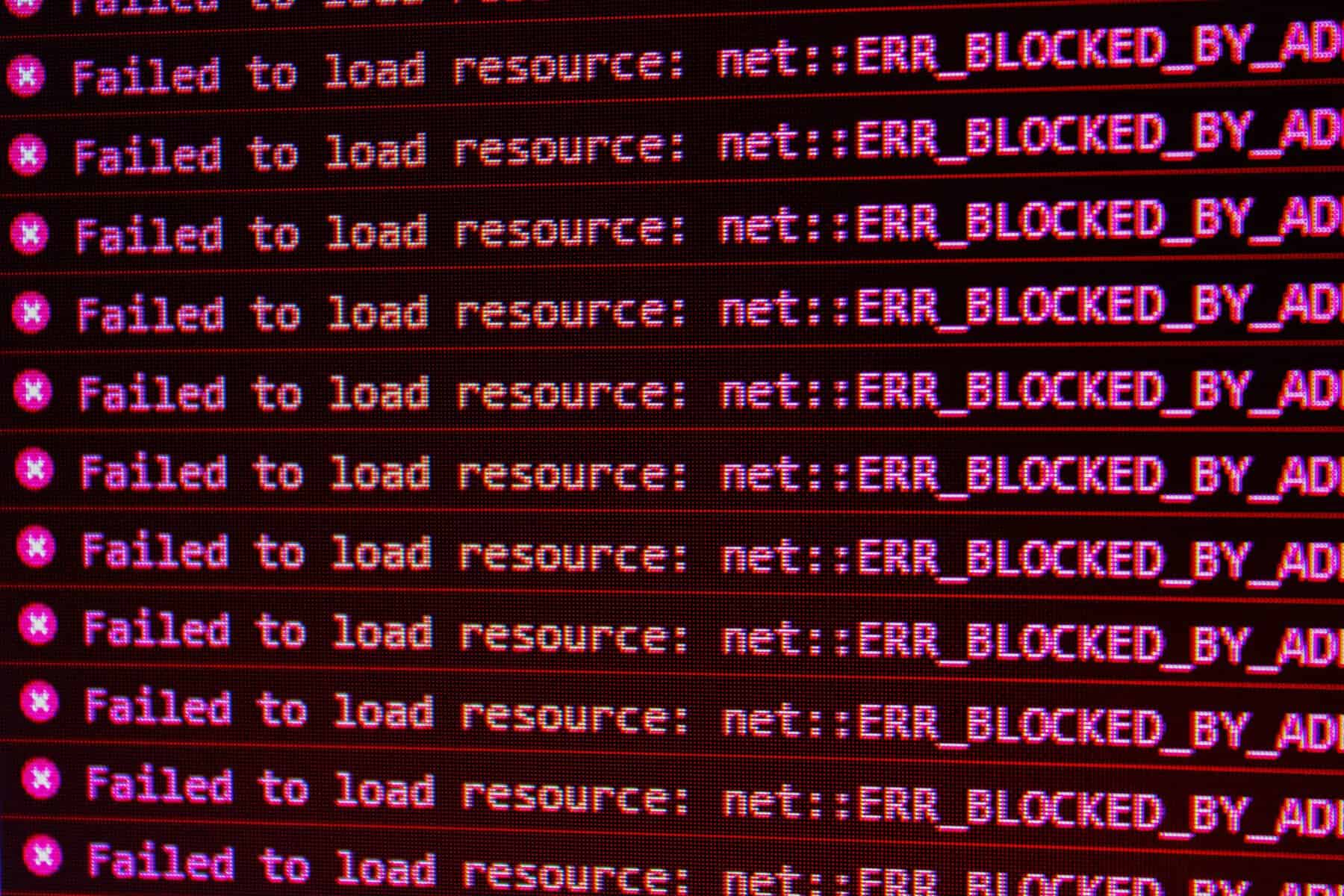When browsing the web, encountering error messages is an all too common occurrence. One of the most prevalent types of errors encountered by internet users are the 4xx errors. These errors occur when a client (such as a web browser) sends a request to a server, but something goes wrong in the process, leading to an unsuccessful response from the server. While these errors can be frustrating for both website visitors and site owners, understanding what they are, how to fix them, and even prevent them can greatly improve online experiences.
In this article, we will delve into the world of 4xx errors – their meaning, causes, and potential solutions.
Understanding 4xx Errors
When browsing the web, you may have encountered a 4xx error at some point. These errors are client-side errors that indicate an issue with the request made by the user. There are various types of 4xx errors, including the well-known 404 Not Found error. This particular error occurs when a requested resource cannot be found on the server. Other common examples of 4xx errors include 403 Forbidden and 401 Unauthorized, which signify that access to the requested resource is either restricted or requires authentication.
To fix these errors, it is crucial to first understand their underlying causes. In some cases, a mistyped URL or missing file can trigger a 404 error, which can be resolved simply by correcting the URL or ensuring that all necessary files are present on the server. Additionally, improper file permissions or configuration settings may lead to other types of 4xx errors such as 403 and 401. To prevent these errors from occurring in the future, it is essential to regularly check for broken links on your website and ensure proper access controls are in place.
By understanding what causes different types of 4xx errors and how to fix them, website owners can provide better user experiences and maintain a smooth browsing journey for their visitors.
 What are 4xx Errors?
What are 4xx Errors?
4xx errors are a type of HTTP status code that indicates client-side errors. These errors occur when the server is unable to process a request made by the client due to incorrect or invalid information. Some common types of 4xx errors include 400 Bad Request, 401 Unauthorized, 403 Forbidden, and 404 Not Found.
To fix these errors, it is important to identify the root cause. The most common reason for 4xx errors is incorrect URLs or missing pages. In such cases, updating the URL or ensuring that the page exists can resolve the issue. Other common fixes include checking for authentication issues, ensuring proper permissions are set for accessing files or directories, and resolving issues related to content delivery network (CDN) configuration.
Preventing 4xx errors requires proactive measures like implementing proper error handling mechanisms and regular website maintenance. It is crucial to provide users with clear and concise error messages that guide them on how to rectify their mistakes. Regularly monitoring website performance and promptly addressing any broken links or outdated content can also help prevent these errors from occurring in the first place.
Common Causes of 4xx Errors
Common causes of 4xx errors can vary depending on the specific error code. One common cause is a client-side issue, such as typing in an incorrect URL or attempting to access a restricted page without proper authorization. Another common cause is when a server receives a request that it cannot fulfill due to missing or invalid parameters.
Additionally, improper redirects or outdated links can also lead to 4xx errors. This can occur when a website changes its URL structure or when old pages are removed without setting up proper redirects. In some cases, websites may also encounter 4xx errors due to server misconfigurations or coding errors.
To prevent these issues and minimize the occurrence of 4xx errors, it is important for website administrators to regularly check for broken links, ensure proper redirections are set up when making changes to URLs, and conduct thorough testing before deploying any updates. Implementing user-friendly error pages with clear instructions on how to navigate back to the desired content can also help mitigate the impact of 4xx errors on user experience.
 How to Fix 4xx Errors
How to Fix 4xx Errors
One common type of 4xx error is the 404 error, which occurs when a webpage is not found. To fix this error, website owners should check for broken links or incorrect URLs and correct them accordingly. Implementing a custom 404 page that provides helpful information to users can also be beneficial.
Another type of 4xx error is the 401 unauthorized error, which happens when access to a particular resource requires authentication. To fix this error, website administrators should ensure that the user has proper credentials to access the requested resource. This can be done by implementing user authentication protocols such as username and password verification.
Some other 4xx errors include the 403 forbidden error and the 400 bad request error. The former occurs when the server refuses to fulfill a request due to insufficient permissions, while the latter indicates that there was an issue with how the request was formulated. Fixing these errors typically involves checking file permissions or validating input data respectively.
Preventing future occurrences of these 4xx errors can be achieved by conducting regular website audits and checking for broken links or incorrect URLs. Additionally, implementing proper security measures such as secure login systems can help prevent unauthorized access errors like the 401 error. Properly formatting requests and validating input data can also reduce instances of bad requests leading to a 400 error.
Preventing Future 4xx Errors
Preventing future 4xx errors is crucial for maintaining a seamless user experience and ensuring the smooth functioning of a website. One effective way to prevent these errors is by implementing proper redirection techniques. This involves redirecting any broken or outdated URLs to relevant and working pages on the website, thus avoiding error messages. Regularly monitoring and auditing the website for broken links can also help in identifying potential 4xx errors before they impact users.
Another important step in preventing future 4xx errors is optimizing URL structure. Using descriptive and concise URLs that accurately reflect the content of each page not only enhances search engine optimization but also reduces the chances of encountering 4xx errors. Additionally, ensuring that all internal links within a website are correctly implemented can significantly reduce the occurrence of broken or dead-end links.
Implementing robust security measures, such as SSL certificates, is equally essential in preventing future 4xx errors. HTTPS encryption helps protect sensitive user information during transmission, reducing the likelihood of triggering 4xx errors due to security vulnerabilities. Furthermore, regularly updating software versions and patching known vulnerabilities can help mitigate potential issues that could lead to these types of errors.
By taking these preventative measures into account, website owners can greatly minimize the occurrence of future 4xx errors while ensuring an optimal user experience for their audience.
 Conclusion: Importance of Resolving and Preventing 4xx Errors
Conclusion: Importance of Resolving and Preventing 4xx Errors
In conclusion, resolving and preventing 4xx errors is crucial for maintaining a seamless user experience on websites. These errors, such as the commonly encountered 404 error, indicate that a requested page or resource could not be found. By promptly resolving these issues, website owners can ensure that their visitors are able to access the content they are looking for without any disruptions.
Furthermore, preventing 4xx errors from occurring in the first place is equally important. This can be achieved by implementing proper website maintenance practices and regularly checking for broken links or outdated URLs. Conducting regular audits of a website's pages and resources can help identify potential issues before they arise, allowing for proactive measures to be taken.
Overall, investing time and effort into resolving and preventing 4xx errors not only improves the user experience but also helps maintain a positive reputation for a website. By addressing these errors promptly and implementing preventive measures, website owners can ensure that their visitors have a smooth navigation experience while exploring their content.




